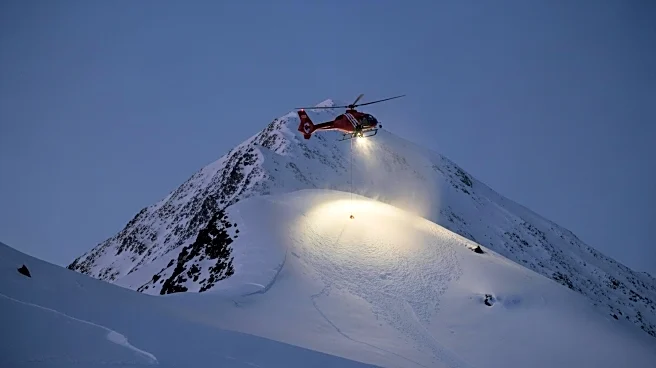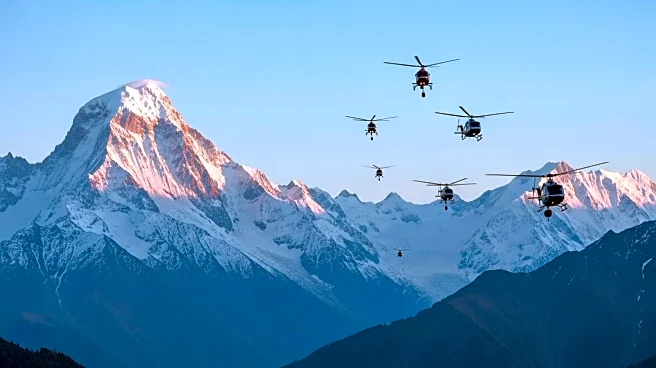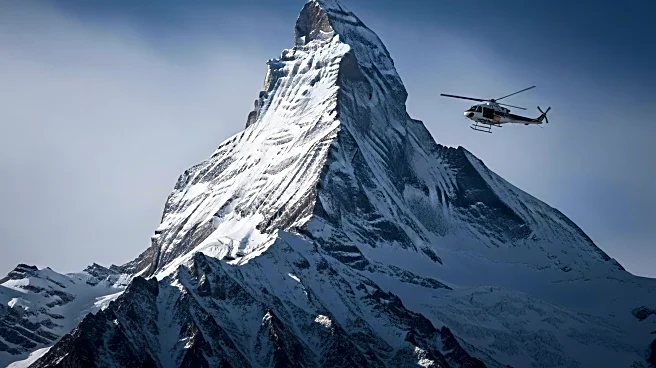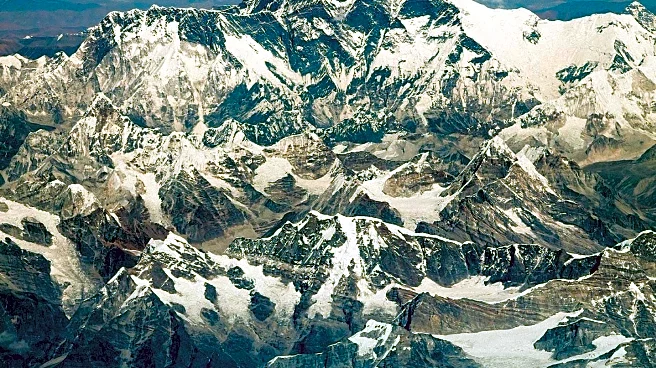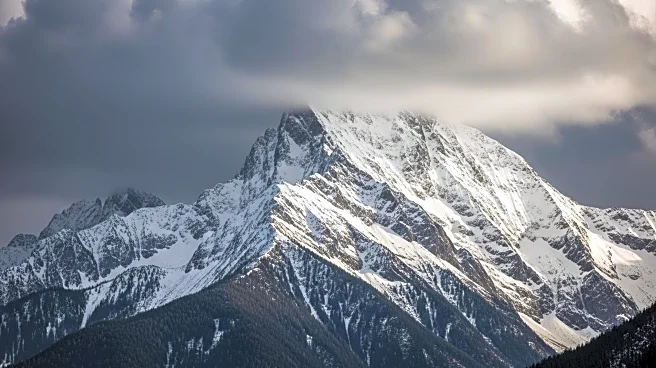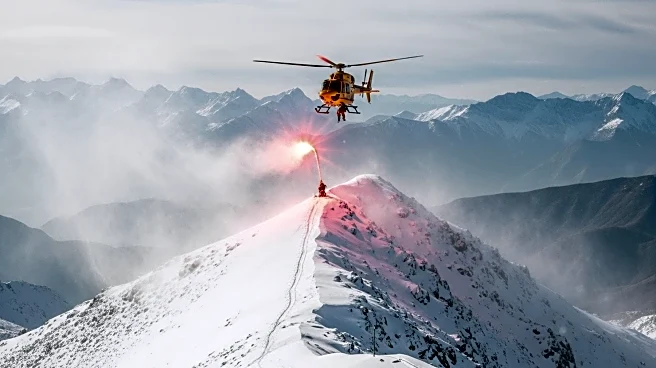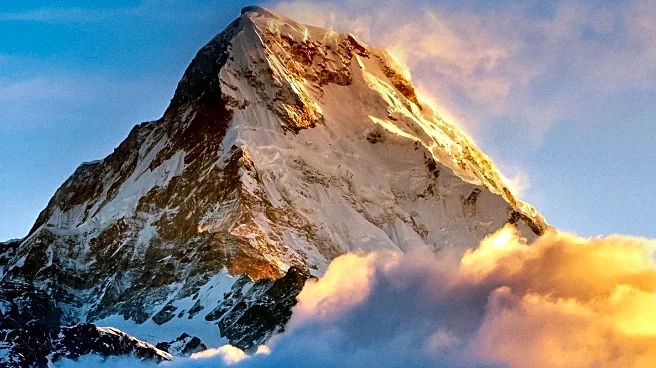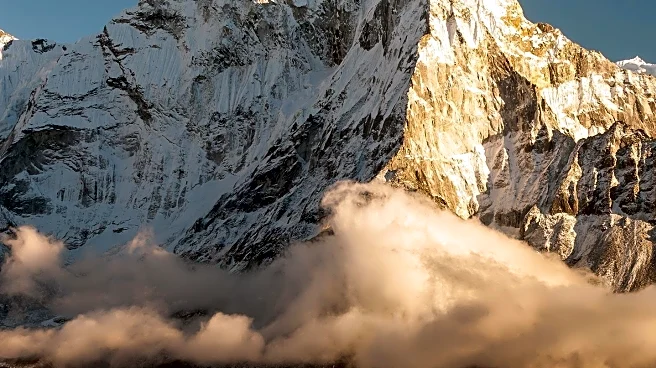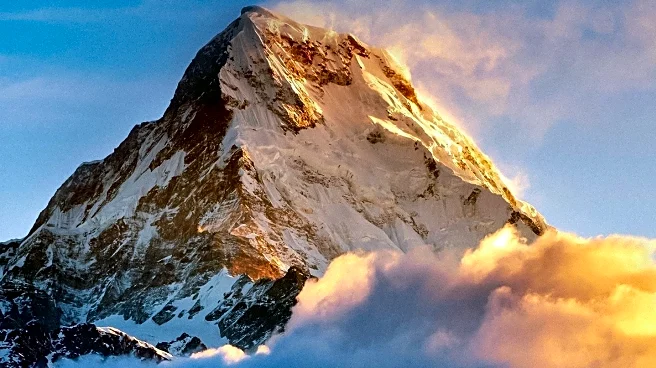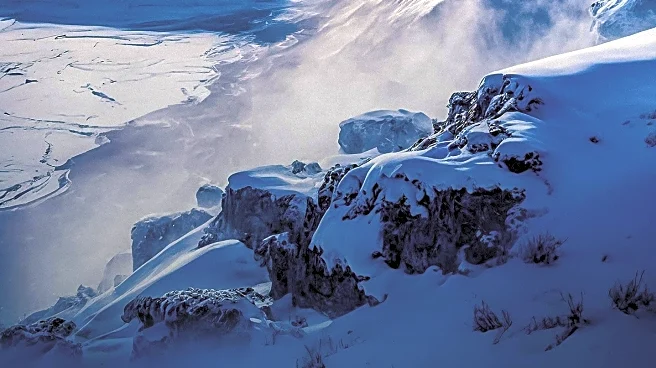What's Happening?
Rescue operations are in progress for hundreds of hikers trapped by heavy snowfall on Mount Everest's slopes in Tibet. According to Chinese state media, approximately 350 hikers have reached a meeting point in Tingri County, while rescuers are in contact with another 200 individuals. The hikers were caught in the snowstorm at an elevation exceeding 16,000 feet. The severe weather conditions, which include snow depths of up to three feet, have crushed tents and posed significant risks of hypothermia. The snowstorm coincided with a weeklong national holiday in China, a period when many people travel domestically and internationally. Rescue teams, comprising hundreds of personnel, have been dispatched to clear paths and facilitate the safe descent of those trapped.
Why It's Important?
The situation highlights the unpredictable and hazardous conditions that can occur in high-altitude regions, impacting both local tourism and international travel. The heavy snowfall and subsequent rescue efforts underscore the challenges faced by emergency services in remote and difficult terrains. The incident also draws attention to the potential risks associated with adventure tourism, particularly in regions prone to sudden weather changes. The economic implications are significant, as the tourism industry in the region may experience disruptions, affecting local businesses and the broader economy reliant on tourist influx during peak travel periods.
What's Next?
Rescue operations are expected to continue as authorities work to ensure the safety of all trapped hikers. The focus will be on clearing paths and providing necessary aid to those affected by the harsh conditions. The incident may prompt a review of safety protocols and emergency preparedness for adventure tourism in high-risk areas. Additionally, there could be increased scrutiny on travel advisories and the management of tourist activities in regions susceptible to extreme weather events.
Beyond the Headlines
The event raises questions about the sustainability and safety of adventure tourism in high-altitude regions. It also highlights the need for improved infrastructure and emergency response capabilities in remote areas. The cultural and political context of Tibet, where the incident occurred, adds another layer of complexity, as the region is subject to strict governmental controls and has a history of political tension. The situation may also influence future policies regarding tourism and development in sensitive and ecologically fragile areas.

